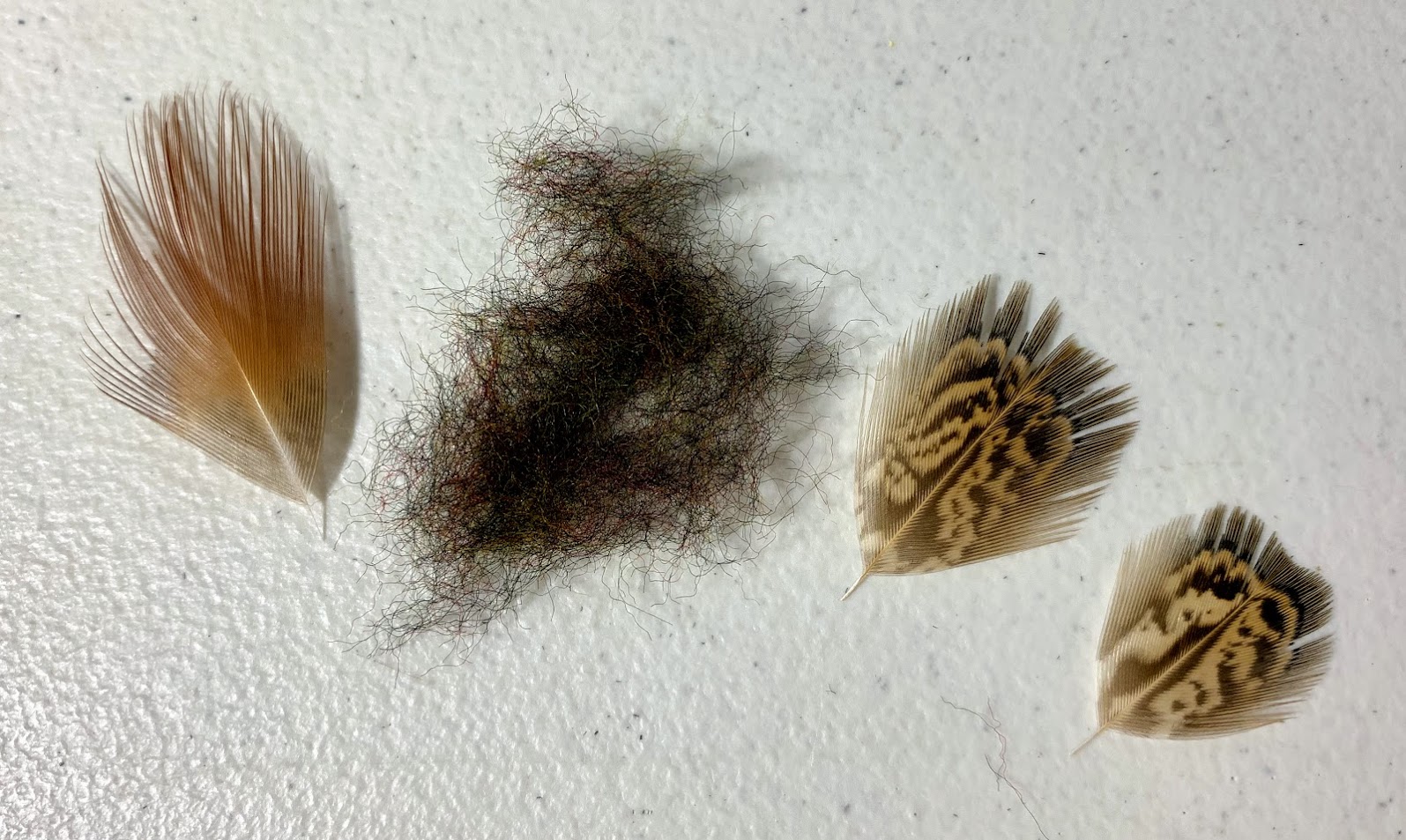I know this is really pushing the boundaries of soft hackle patterns, but here is the latest crayfish variant, tyed on micro jig hooks (1/32nd oz). These will be part of my smallmouth arsenal next spring. Can't wait to see how the bass react to this pattern!
 FLEEING CRAYFISH
FLEEING CRAYFISH
Hook - Crappie Magnet Jig Head Hook/Size 6 ( 1/32nd ounce )
Thread - 8/0 UNI-Thread (Rusty Dun)
Feelers/Antena - Six or Seven Strands of Pheasant Tail Fibers (Dyed Red)
Butt - Pheasant Philoplume (renforced in a thread dubbing loop & wrapped as a fluffy chenille)
Rear Hackle - Smaller Size Ring Neck Pheasant Church Window Feather (Natural)
Rear Body - Wool-Ease Dubbing (Walnut/#127)
Middle Hackle - Medium Sized Ring Neck Pheasant Church Window Feather (Natural)
Middle Body - Wool-Ease Dubbing (Walnut/#127)
Front Hackle - Large Sized Ring Neck Pheasant Rump Feather (Natural)
Head (Front Body) - Wool-Ease Dubbing (Walnut/#127)
DESIGN NOTES (FIELD TRIALS MAY RESULT IN PATTERN ALTERATIONS)
- Impressionistic fleeing crayfish imitation, tyed "in-the-round". Weighted to fish deeply. One thirty-second ounce weight is light enough to cast on a fly rod, yet still drop quickly to the bottom after being stripped in.
- The pattern is roughly divided into three equal sections (Rear/Middle/Front), separated by the hackle collar in between each section. The dubbing can be changed out with whatever color wool yarn you want to use. In this case I chopped up some Wool-Ease Chuncky yarn (Walnut) and put it thru my coffee grinder to form a nice mottled brown dubbing blend. Tanish gray would also be a good choice for imitating crayfish.
- The dubbed body is formed with the touch-dub method (heavily waxed thread and loose dubbing pressed onto the thread/wrap back and forth to form a loose body/creates broader profile without adding significant additional weight to the fly). I tried to hide most of the jig head with a dubbed section. I may add some dark marker, to further conceal the lead head.
- I picked this style jig hook because of it's small size and unique shape (angled head helps hook avoid snags and much of the weight is forward of the hook eye, which helps balance the pattern and cause it to swim horizontal.
- The weighted jig head naturally causes the point of the hook to ride upwards (hopefully decreasing tendency to snag on the bottom).

- CrappieMagnetJigHeadHook.jpg (11.9 KiB) Viewed 5480 times





Here is an even smaller version, tyed on TroutMagnet Jig Head hooks (1/64th Ounce/Size 8).

